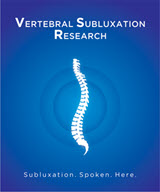New Research on Tremors & Chiropractic

CLICK HERE to review the research
Research has shown not only that the developing brain relies on normal spinal structural integrity, balance and joint movement, but that complex neurochemical communication and pathways involved in helping people adapt to their environment are tied into spinal biomechanics and their related neurological pathways.
“It makes perfect sense when you think about it” stated Dr. McCoy. “The brain constantly needs and wants to know where our body is in space and what is going on relative to all functions of the body. If there is obstruction to the neurological communication between the spine and the brain all sorts of malfunctions can occur and this can lead to symptoms such as tremors and other neurological disorders.”
Researchers studying the connection between chiropractic, nerve obstruction and neurological disorders believe that these types of functional disorders can be caused by even slight misalignments of the bones in the spine.
“There are very important functional relationships between the spine and the brain that if disturbed can result in a host of problems with how the body functions” remarked McCoy. He added “If there is abnormal position or movement of the spinal vertebra this can lead to nerve obstruction. It is this obstruction, called vertebral subluxation, that chiropractors correct.”
The patient reported on in the study was a 58-year old female suffering over 40 years from tremors in both of her arms. Her tremors got progressively worse after 20 years and she had numbness, tingling, and weakness in her right arm, wrist, and hand. The tremors made cooking and putting on makeup challenging for her. Other daily activities like holding a pen or opening jars were difficult. She also experienced headaches, back pain, and brain fog, which often manifested as lack of motivation and concentration.
The chiropractor examined her and found structural shifts in her neck, back, and hips. She had postural changes and tenderness in her neck muscles. X-rays and other testing confirmed these findings. These structural shifts can lead to obstruction of the nerves and it is this obstruction, called vertebral subluxations, that chiropractors correct.
Following chiropractic care her tremors improved immediately and within a day she reported an 80% improvement. Other symptoms associated with her tremors resolved or improved dramatically. Her neck tenderness resolved, and her hips balanced. Follow up x-rays confirmed improvement.
The study’s author called for additional research to investigate the clinical implications of chiropractic care of those with tremors.
Contact Information:
Matthew McCoy DC, MPH
Journal of Upper Cervical Chiropractic Research
http://www.uppercervicalsubluxation.com
support@vertebralsubluxationresearch.com

Research News
- The 19th International Research and Philosophy Symposium (IRAPS): Bridging Philosophy, Science, and Practice in Chiropractic
- New Study Uncovers the Broad Systemic Benefits of Chiropractic Care on Nervous, Endocrine, and Immune Systems
- The Hidden Power of the Spine: How Vertebral Subluxation Impacts Health Through Systems Biology
- New Study Sheds Light on Vertebral Subluxation and Systems Biology
- Understanding Cervical Spine Movement and Motor Vehicle Accidents













